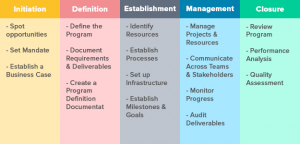
Traffic surges are like cursed blesses. All the happy glints of a high traffic can easily turn into a cursed spike for your website.
A traffic surge is an assured phenomenon for any website that lives on the web.
Eventually, a high traffic surge can hit a website in two ways. Firstly, a plush authority of a site on the web can bring in a large number of sudden web traffic. Secondly, there can be an unavoidable spike due to a slash-dot effect for relatively less popular sites.
For dealing with both situations, a bunch of tech factors related to the web hosting and with the hosted websites need to be monitored meticulously. Though the treatment for each of the situation is different still, web host hardware configuration is of great importance for both conditions and typically, it’s the single most common way out. Admittedly, type of a web hosting and the hardware resources it houses play the cardinal role for any traffic surge followed by an efficient handling.
Before choosing the right web server, it’s always better to have a clear cognizance on these following features which help a web server to encounter any sudden ripple of visitors within a blade of time.
Load balancer

For sharing the extra load due to a traffic surge, load balancers are indispensable as hardware feature. Technically, a load balancer acts as a switch which channelizes the extra load to any web server connected with it. It executes this entire load balancing process in two different stages:
- When a traffic surge hits the website, it searches among the connected web servers and locates that is least loaded.
- Secondly, it processes that additional load to that least loaded web server for execution, thus, it can sustain the extra load of traffic.
Thus, the principal goal of any load balancing switch is to make sure that every connected web server is equally loaded. Moreover, if any of those connected web server dies, the rest if the system remains unaffected. Thus, only a load balancer can make a web server combat ready and can foster them to deliver 100% uptime.
This load balancing feature is a lifesaver for businesses like:
- E-commerce
- Online gaming websites with a multi-server strategy
- High user engaging, event oriented, web applications
Most of the web server types like dedicated, VPS and shared integrate this feature.
Content Delivery Network

CDN or content delivery networks are the second most important weapon to handle traffic spikes. What a CDN actually does is, it distributes your website components to a number of data centers, which are situated on different geographic locations across the world, through a delivery network. Thus, it boasts the ability to deliver content from your website to every person trying to reach your website from every corner of this planet.
That being said, when a user requests for your content on the web from a certain Geo location, the CDN serves the same from its nearest server of that Geo location. So, any user’s request for your contents doesn’t need to reach to the origin server.
Thus a CDN shatters any traffic surge from its root. There are some additional features of a CDN to dodge traffic surges. They are:
- Webmasters can cache their content on a CDN which ensures a faster content delivery to the end users.
- A CDN can update cached contents automatically to deliver their latest versions
- Faster loading time of our website
- Ensures overall stability as it protects the origin server from being overloaded
- It reduces the scaling cost as it distributes the traffic load
Burstable RAM

This feature is an integral part of a VPS. Technically, a burstable RAM is that extra amount of RAM which functions only when there is a traffic surge or a burst. Prior to this, it’s a no brainer to say that vps hosting support heavy traffic than shared hosting as it’s equipped with a dedicated RAM which is absent in shared hosting ecosystems.
Normally, a VPS possesses two types of RAM. One is the ‘guaranteed RAM’, which is always available and the second one is a burstable RAM, which connects with the guaranteed RAM momentarily and up to a specified amount. This burstable RAM isn’t always available, as it’s not designed in that way, to a VPS but during a spike, for sharing that extra load with the guaranteed RAM.
Burstable Bandwidth
The working principal of burstable bandwidth is same as burstable RAM. Simply, it’s the upper limit of the total internet channel and speed capacity of a web hosting service. Eventually, when there is a traffic surge, hosted web sites can consume an extra layer of data transfer than it’s contractually allowed for its hosting service.
Specially, for colocation units it enables a webmaster to immediately scale the connectivity, at any point of time, and help him to take proper measures during a traffic surge. Although, for feeding a regular volume of web traffic, an ISP always guarantees to provide the average bandwidth or committed information rate(CIR) to its customers. Still, during a traffic surge, especially for windows or Linux , vps hosting, burstable bandwidth does the extra heavy lifting.
With this burstable bandwidth setup, a customer is entitled to use more than its speed limits during a temporary traffic surge.
Mirror Sites

Mirror sites or data mirroring is a process of copying a web page or a full website and keeping them under a different URL on different Geo locations to dedicatedly serve users from that location. It’s used for slashing the load of traffic from the origin server on which your website is hosted.
The key benefits of data mirroring include:
- Faster downloads for users from a specific Geo location
- Ensure the reliability by balancing the load among several alike servers
- Protects the origin server from being overloaded
- Cost effective for a business as it reduces the cost of scaling
This list isn’t complete as there are other factors that you will have to consider before choosing the right web server to handle traffic surges, like the physical location of your web server to reach your generic target market, the quality of the web hosting and the strength of the communications between connected servers.
In the light of above discussed points you can analyze different types of web hosting with their pros and cons for handling sudden traffic spikes.
Shared Hosting:
Every server resources are shared thus, there is a possibility of decreased performance
If a website is facing a traffic spike, the result is shared among other websites, thus, a poor performance level affects each of them.
VPS Hosting
- Better traffic surge handling capability due to dedicated resources
- Performance of any hosted website can’t get affected by other hosted websites facing spikes or any software glitches
- Integrated burstable arrangement
- Ideal for small to medium scale businesses expecting a medium range of traffic volume
Dedicated Hosting
It’s the unparalleled best hosting if the performance issues of a website during a traffic spike is concerned. It has its own glory with its abundant server resources for any kind of situation, but it’s too heavy for a small budget.
So, choosing the right server isn’t a painless process, but analyzing your business requirements can surely help you to choose the right one.
(185)






